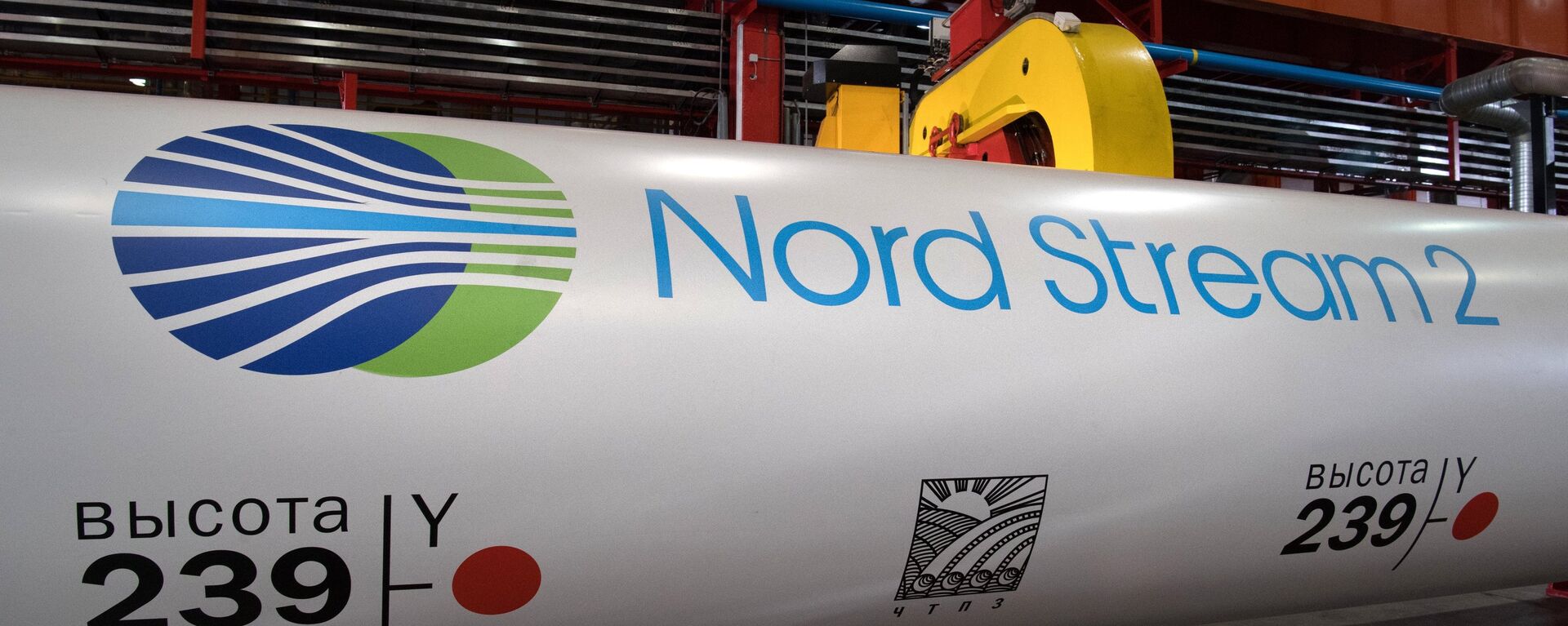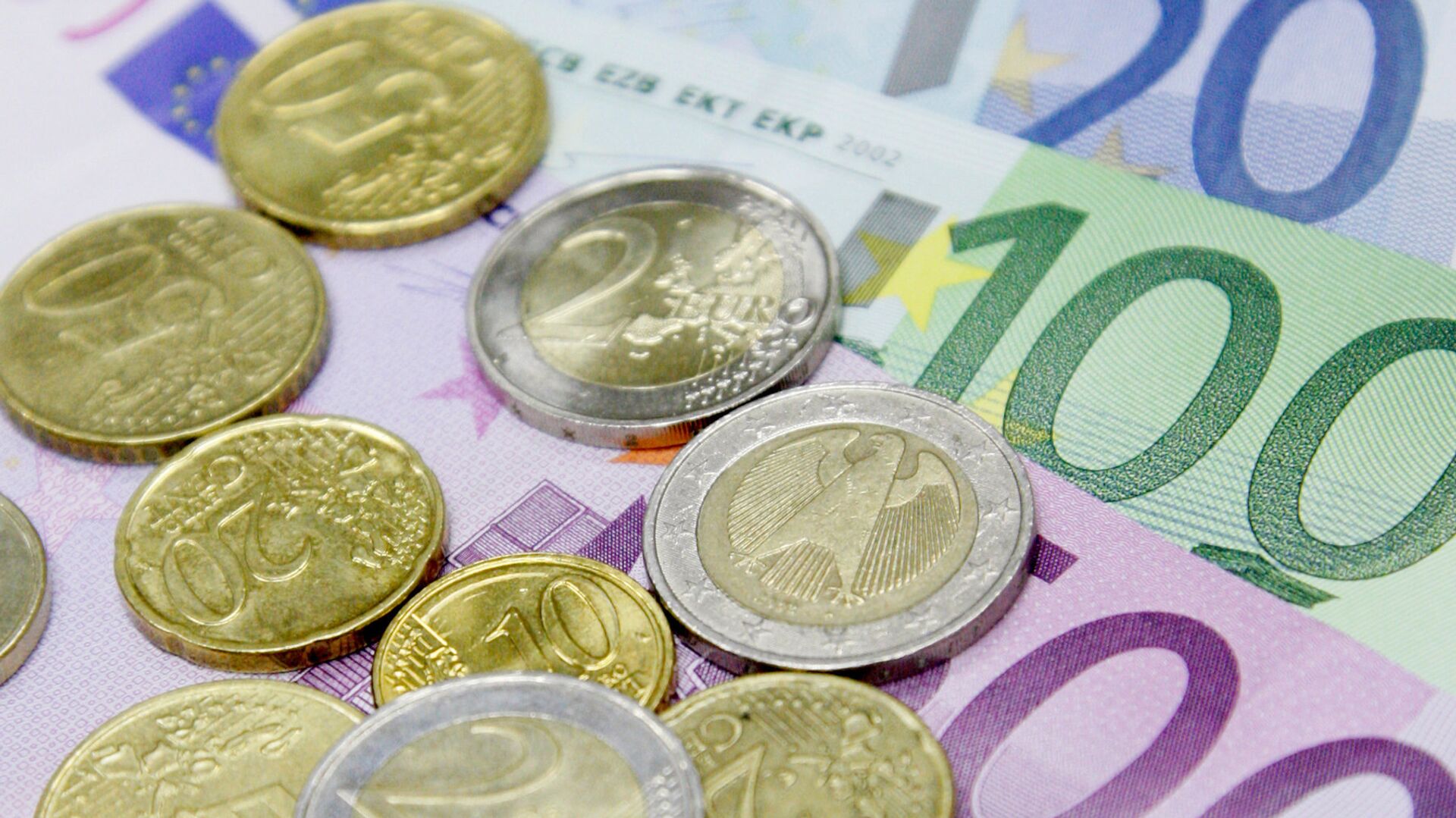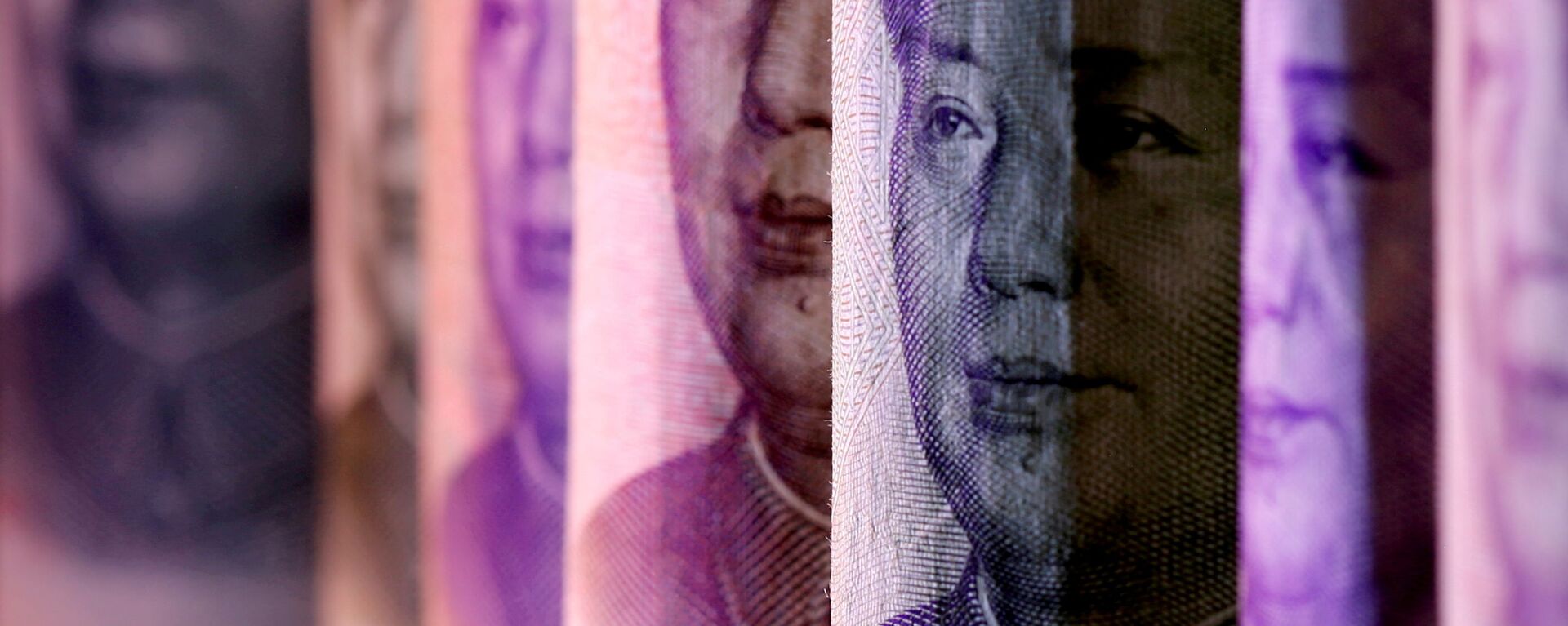https://sputnikglobe.com/20230220/how-eu-pushing-ahead-with-digital-euro-amid-de-industrialization-and-us-protectionism-1107632733.html
How EU Pushing Ahead With Digital Euro Amid De-Industrialization and US Protectionism
How EU Pushing Ahead With Digital Euro Amid De-Industrialization and US Protectionism
Sputnik International
The governors of 20 central banks of the Eurozone and the six members of the European Central Bank's (ECB) executive board are due to hold a secret meeting in... 20.02.2023, Sputnik International
2023-02-20T15:04+0000
2023-02-20T15:04+0000
2023-03-05T11:23+0000
economy
europe
digital currency
eu economy
energy crisis
recession
stable coin
central bank
the european central bank (ecb)
euro
https://cdn1.img.sputnikglobe.com/img/102495/97/1024959725_0:371:1805:1386_1920x0_80_0_0_eec2a784ed15626e01bcd544eaafec81.jpg
The European Central Bank (ECB) has been working on a digital currency since 2020. It has reportedly been whipped up into this move by Chinese central bankers and US tech giants.According to western media, the EU has little alternative but to pursue the trend; otherwise it may find itself in a "sandwich" between the US and China's payment systems.On Monday, Politico reported that the governors of Eurozone central banks will hold a meeting in Inari, Finnish Lapland, on February 22, to discuss a number of topics. One of them is how best to persuade the EU population that a digital extension of euro banknotes and coins will come in handy and will pose no threat to their rights or liberties. The urgency of the issue apparently means that the bloc is getting closer to the digitalization of the euro. The European Commission is due to propose a legal framework for the central bank digital currency (CBDC) by May 2023.According to the media, European financial leaders have already started to sell the idea of the eventual shift to the CBDC to the public. Last month, ECB executive Fabio Panetta explained to European politicians that the digital euro would never be "programmable money", while the ECB would never set any limitations on where, when or to whom people can pay with the CBDC.The bloc's central bank also claimed that it would never monitor people's shopping habits and that the digital euro won't replace cold hard cash, but will complement it. Still, according to the press, the bloc's population remains under-informed and not too enthusiastic about the development.EU Competitors Overcrowd Digital Payment MarketThe ECB is pushing ahead with the digital currency project as China continues to implement its digital yuan full throttle. The People's Bank of China (PBOC) began research on the digital currency in 2014 and kick-started testing in four cities around China in April 2020, namely, Shenzhen, Suzhou, Chengdu and Xiongan.Last month the PBOC announced that the digital yuans (e-CNY) in circulation had been included in the amount of currency in circulation starting December 2022. E-CNY represented 0.13% of cash and reserves held by the Chinese central bank.In January, the e-CNY was also used to buy securities for the first time, according to local reports. Furthermore, the nation is reported to have added a function to its e-CNY payment app which would allow Chinese users to make payments offline.On the other side of the pond, US Big Tech has been mulling the idea of a stable coin. Earlier, Meta* proposed the Diem (formerly known as Libra), a blockchain-based stablecoin payment system which was wound down in January 2022. The digital currency was to be backed by a basket of assets, including major currencies and government debt instruments.The US is also considering a US Central Bank Digital Currency (CBDC), a “digital dollar.” Last year, the nonprofit organization Digital Dollar Project was created to encourage research and public discussion on the potential advantages and challenges of the token.In addition, three US major payment systems, Mastercard, Visa, and PayPal, are calling the shots in the market.All of the above triggered deep concerns among EU financial authorities as the bloc clearly lacks digital platforms."The entry of big techs into payments could increase the risk of market domination and dependence on foreign payment technologies, with consequences for Europe’s strategic autonomy," ECB President Christine Lagarde announced last November. "Already now more than two-thirds of European card payment transactions are run by companies with headquarters outside the European Union."That means that European consumers risk becoming dependent on foreign firms and institutions when it comes to digital payments, unless the union rolls out its own digital system.Challenges to EU Strategic AutonomyThe relevance of preserving geopolitical sovereignty for the European bloc has taken on new significance amid still-high inflation indicators. According to the ECB white-papers, digitalization of the euro could help keep prices stable, thus helping tame inflation among other measures."Today, we can compare prices from around the world at the click of a button, allowing us to find the lowest price within seconds," the ECB asserted. "This means that businesses cannot increase prices without running the risk of customers turning to the next cheapest online offer. That can keep inflation – the rate at which the overall prices for goods and services change over time – low."However, international economic observers refer to deeper problems engulfing the bloc's economy, namely energy insecurity and uncontrolled de-industrialization which could last, according to some estimates, through 2025.Indeed, after the EU slapped an energy embargo on Russia and saw the Nord Stream pipelines destroyed by unidentified culprits (which, according to Pulitzer Prize-winning journalist Seymour Hersh are the US and Norway), energy prices went up and European manufacturers have increasingly become uncompetitive. If the EU raises tariffs to equalize prices, it will further lower living standards for European citizens, experts have suggested. In addition, the US introduced protectionist measures for North American EV producers, dealing yet another blow to the Old Continent.On February 1, the European Commission presented its Green Deal industrial and investment plan to stimulate development and secure strategic autonomy for the EU in a bid to counter Joe Biden's Inflation Reduction Act (IRA).While European capitals are considering their response to Biden's protectionism, EU firms have kicked off investment plans in the US to benefit from Washington's climate bonanza. To cap it off, the Biden administration is twisting the EU's hand into sending more weapons and funds to fan the flames of the Ukraine conflict.It's unclear whether a new digital currency will help Europe to cope with so many challenges to its strategic autonomy without re-evaluating its relations with Washington and re-shuffling the bloc's economy.*Meta is banned in Russia over extremist activities.
https://sputnikglobe.com/20210620/privacy-stability--monetary-sovereignty-eu-central-bank-board-member-defends-digital-euro-idea-1083193680.html
https://sputnikglobe.com/20210726/chinas-e-yuan-could-be-largest-threat-to-west-as-us-slow-to-develop-digital-dollar---report-1083461106.html
https://sputnikglobe.com/20220503/i-thought-id-never-see-it-paypal-seizes-funds-of-independent-media-without-offering-explanation-1095244405.html
https://sputnikglobe.com/20230211/why-hershs-nord-stream-bombshell-may-become-legal-nightmare-for-team-biden--its-nordic-allies-1107344300.html
Sputnik International
feedback@sputniknews.com
+74956456601
MIA „Rossiya Segodnya“
2023
News
en_EN
Sputnik International
feedback@sputniknews.com
+74956456601
MIA „Rossiya Segodnya“
Sputnik International
feedback@sputniknews.com
+74956456601
MIA „Rossiya Segodnya“
european central bank, eu digital currency, digital euro, chinese digital yuan, us payment systems, eu digital platforms, energy crisis, de-industrialization in eu, energy costs, biden's protectionist measures, inflation reduction act
european central bank, eu digital currency, digital euro, chinese digital yuan, us payment systems, eu digital platforms, energy crisis, de-industrialization in eu, energy costs, biden's protectionist measures, inflation reduction act
How EU Pushing Ahead With Digital Euro Amid De-Industrialization and US Protectionism
15:04 GMT 20.02.2023 (Updated: 11:23 GMT 05.03.2023) The governors of 20 central banks of the Eurozone and the six members of the European Central Bank's (ECB) executive board are due to hold a secret meeting in Lapland, Finland, to discuss how to persuade the public to adopt a digital euro on Wednesday, according to western press.
The European Central Bank (ECB)
has been working on a digital currency since 2020. It has reportedly been whipped up into this move by Chinese central bankers and US tech giants.
According to western media, the EU has little alternative but to pursue the trend; otherwise it may find itself in a "sandwich" between the US and China's payment systems.
On Monday, Politico reported that the governors of Eurozone central banks will hold a meeting in Inari, Finnish Lapland, on February 22, to discuss a number of topics. One of them is how best to persuade the EU population that a digital extension of euro banknotes and coins will come in handy and will pose no threat to their rights or liberties.
The urgency of the issue apparently means that the bloc is getting closer to the digitalization of the euro. The European Commission is due to propose a legal framework for the central bank digital currency (CBDC) by May 2023.
According to the media, European financial leaders have already started to sell the idea of the eventual shift to the CBDC to the public. Last month, ECB executive Fabio Panetta explained to European politicians that the digital euro would never be "programmable money", while the ECB would never set any limitations on where, when or to whom people can pay with the CBDC.
The bloc's central bank also claimed that it would never monitor people's shopping habits and that the digital euro won't replace cold hard cash, but will complement it. Still, according to the press, the bloc's population remains under-informed and not too enthusiastic about the development.
EU Competitors Overcrowd Digital Payment Market
The ECB is pushing ahead with the digital currency project as China continues to implement its digital yuan full throttle. The People's Bank of China (PBOC) began research on the digital currency in 2014 and kick-started testing in four cities around China in April 2020, namely, Shenzhen, Suzhou, Chengdu and Xiongan.
Last month the PBOC announced that the digital yuans (e-CNY) in circulation had been included in the amount of currency in circulation starting December 2022. E-CNY represented 0.13% of cash and reserves held by the Chinese central bank.
In January, the e-CNY was also used to buy securities for the first time, according to local reports. Furthermore, the nation is reported to have added a function to its e-CNY payment app which would allow Chinese users to make payments offline.
On the other side of the pond, US Big Tech has been mulling the idea of a stable coin. Earlier, Meta* proposed the Diem (formerly known as Libra), a blockchain-based stablecoin payment system which was wound down in January 2022. The digital currency was to be backed by a basket of assets, including major currencies and government debt instruments.
The US is also considering a US Central Bank Digital Currency (CBDC), a “digital dollar.” Last year, the nonprofit organization Digital Dollar Project was created to encourage research and public discussion on the potential advantages and challenges of the token.
In addition, three US major payment systems, Mastercard, Visa, and PayPal, are calling the shots in the market.
All of the above triggered deep concerns among EU financial authorities as the bloc clearly lacks digital platforms.
"The entry of big techs into payments could increase the risk of market domination and dependence on foreign payment technologies, with consequences for Europe’s strategic autonomy," ECB President Christine Lagarde announced last November. "Already now more than two-thirds of European card payment transactions are run by companies with headquarters outside the European Union."
That means that European consumers risk becoming dependent on foreign firms and institutions when it comes to digital payments, unless the union rolls out its own digital system.
Challenges to EU Strategic Autonomy
The relevance of preserving geopolitical sovereignty for the European bloc has taken on new significance amid still-high inflation indicators. According to the ECB white-papers, digitalization of the euro could help keep prices stable, thus helping tame inflation among other measures.
"Today, we can compare prices from around the world at the click of a button, allowing us to find the lowest price within seconds," the ECB asserted. "This means that businesses cannot increase prices without running the risk of customers turning to the next cheapest online offer. That can keep inflation – the rate at which the overall prices for goods and services change over time – low."
However, international economic observers refer to deeper problems engulfing the bloc's economy, namely energy insecurity and uncontrolled de-industrialization which could last, according to some estimates, through 2025.

11 February 2023, 15:39 GMT
Indeed, after the EU slapped an energy embargo on Russia and saw the Nord Stream pipelines destroyed by unidentified culprits (which, according to Pulitzer Prize-winning journalist Seymour Hersh
are the US and Norway), energy prices went up and European manufacturers have increasingly become uncompetitive. If the EU raises tariffs to equalize prices, it will further lower living standards for European citizens, experts have suggested. In addition, the US introduced protectionist measures for North American EV producers, dealing yet another blow to the Old Continent.
On February 1, the European Commission presented its Green Deal industrial and investment plan to stimulate development and secure strategic autonomy for the EU in a bid to counter Joe Biden's Inflation Reduction Act (IRA).
While European capitals are considering their response to Biden's protectionism, EU firms have kicked off investment plans in the US to benefit from Washington's climate bonanza. To cap it off, the Biden administration is twisting the EU's hand into sending more weapons and funds to fan the flames of the Ukraine conflict.
It's unclear whether a new digital currency will help Europe to cope with so many challenges to its strategic autonomy without re-evaluating its relations with Washington and re-shuffling the bloc's economy.
*Meta is banned in Russia over extremist activities.






